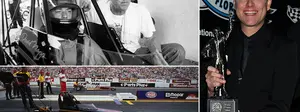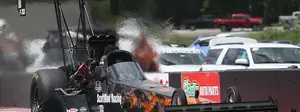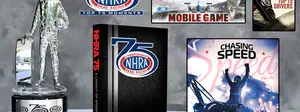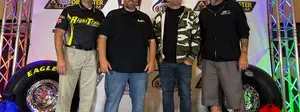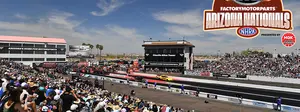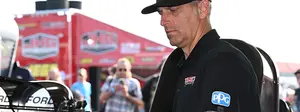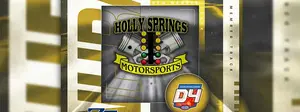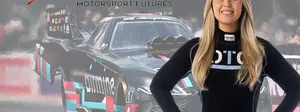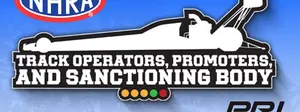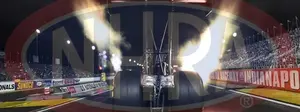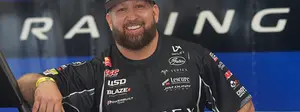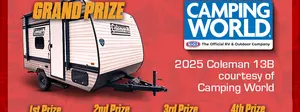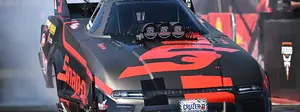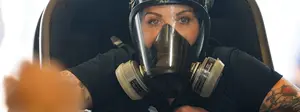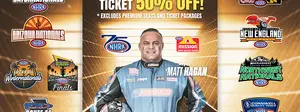

On-track testing begins for next generation of NHRA Pro Stock cars

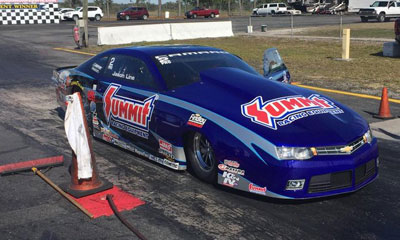
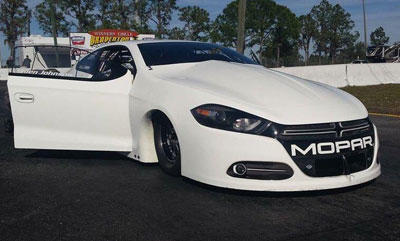
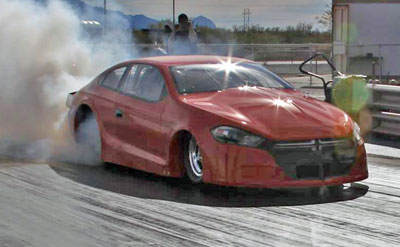
The era of fuel-injected NHRA Pro Stock cars doesn’t officially begin until Feb. 12 when the revamped class helps to kick off the 2016 NHRA Mello Yello Drag Racing Series season at the Circle K NHRA Winternationals. Last week, several teams made their first runs with the new combination, which also includes a flat hood, electronically controlled 10,500-rpm rev limiter, and a shorter wheelie bar. The changes represent the first major overhaul to the factory hot rod class since the introduction of the 500-cid engine platform in 1982.
With just 12 weeks between the end of the 2015 season and the start of the 2016 campaign, time was not on the side of the Pro Stock teams, which scrambled to gather parts, modify existing race cars and components, and dyno-test engines. Even before the first engine was ready to fire, it was virtually a given that the new combination would produce less horsepower, especially with the 10,500-rpm limit, but no one knew how much. Early estimates ranged from 50 to 125 horsepower, which could translate to approximately one- or two-tenths on the racetrack.
Many of the initial questions were answered in January when Shane Gray made the first test passes in his Gray Manufacturing Camaro. After some initial gremlins, Gray recorded a respectable 6.64. He later improved to a 6.58, 209.78 on a nighttime run. Going in, most agreed that the 2016 cars would initially be slower than their carbureted counterparts, and Gray’s runs provided a much-needed barometer.
“I think it's about five mph off and at least a tenth off of last year's stuff," said Gray. "I sort of suspected it. I expected it to run a little bit more speed than it did. Shoot, man, we've got miles and miles to go with this stuff. The drivability of it – I don't want to sound negative – but let's just say it's laughable and tricky. The drivability on the starting line is definitely a handful.”
Gray, and nearly everyone else who has made runs with the new combination, quickly discovered that the electronic fuel injection has different characteristics than the twin four-barrel carburetors that were used since the class made its official debut in 1970. The biggest challenge drivers appeared to face is adapting to a new burnout and staging routine.
“The burnout is very, very tricky,” Gray said. “The staging procedure is really tricky. You can't really give it any throttle staging it. You have to stage the thing at idle because if you start to give it any input on the throttle, then it changes the mapping and starts putting a bunch of fuel in the motor. If you try to give it throttle to stage it, it will just flood itself and die.”
Summit Racing teammates Greg Anderson and Jason Line had originally planned to attend a single test session at Wild Horse Pass Motorsports Park on the way to Pomona, but they opted to head to Florida last week. Much like Gray, the Summit drivers wanted to iron out any potential bugs with the new fuel-injection setup and accompanying EFI software. Anderson made 13 runs and ended the two-day test with a very respectable 6.52-second elapsed time, taking advantage of prime air and track conditions.
“We survived,” he said. “The car started every time. We didn’t hit anything, and we got down the track several times and actually learned a lot. To be honest, it went better than we had expected. Yes, it is a bit slower than our old setup, but we knew that going in. What we really wanted to find out is if we could do a burnout and launch the car. Those were the big issues, and we made some gains.”
Anderson went on to explain that the new fuel-injection unit, with a single throttle blade, greatly affects drivability. Even something as simple as driving the car into the burnout area requires a different driving technique.
“It’s hard to make them idle right, and you can’t really break the throttle open; there is just a very limited amount of drivability,” Anderson said. “It’s not like the old cars; you can’t just give it gas and ease the clutch out. There is a lot of vacuum behind that throttle blade; you push and push the throttle, and it won’t go, and then all of a sudden, it’s wide-open. As drivers, it makes us look like we don’t know what we’re doing. We’ll get it worked out, but for the short-term, it’s going to be a challenge.
“In the end, it was time well spent,” Anderson said. “Our expectations were low, so we didn’t have to go too far to exceed them. We got the car to the finish line, and now we can go work on it some more. Yes, the driving is an issue, but everyone is going to have the same problem. It takes a bit of effort to get staged, and I’d almost guarantee that someone will get timed out in Pomona, but again, that’s something we’re going to have to figure out over time.”
Allen Johnson ended the 2015 season with a win in Pomona but faced an uncertain future after parting ways with longtime sponsor Mopar. However, Johnson secured a new backer for this season and barely skipped a beat. He joined the Gray and KB teams in Florida with his unlettered white Dart. Johnson is expected to announce his new sponsor shortly.
“Testing proved that patience is a virtue,” said Johnson, who managed a best of 6.564, 209.99 after a couple of early-shutoff attempts. “The new EFI setup requires a lot of runs for the driver and crew to get used to. It's a big change. It's going to be a tenth slower at least and probably three to five miles per hour slower. My crew did a great job with only three days to test in Bradenton. We'll go back the first week of February to do some more testing.”
While Anderson, Gray, and Johnson were testing in Florida, V. Gaines was a couple of thousand miles away testing his Hemi-powered Dodge Dart at Tucson Dragway in Arizona. Gaines reportedly made several runs using the new combination. He didn’t share any numbers from the test but was reportedly encouraged by his initial outing.

























